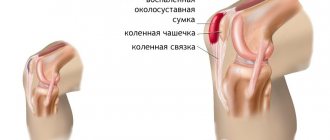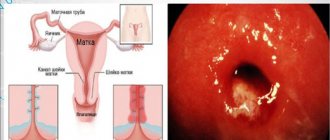Throat cancer is a malignant neoplasm in the pharynx or larynx that arises as a result of tissue changes under the influence of unfavorable factors. Initially, the tumor is localized in the throat. As the pathological process develops, the tumor from the larynx and pharynx penetrates into neighboring tissues and organs.
All conditions for the treatment of throat cancer have been created in the oncology clinic of the Yusupov Hospital:
- Patients stay in comfortable rooms during examination and treatment;
- They are provided with individual personal hygiene products and high-quality dietary nutrition;
- Patients are examined using the latest equipment from leading companies in the USA, Japan, and Italy;
- Doctors provide complex therapy for oncology of the larynx and pharynx.
Medical staff provides professional patient care.
Classification of laryngeal cancer
Classification of laryngeal cancer in the field of otolaryngology is carried out depending on the histological type, as well as the location and nature of tumor growth. The type of stage of the advanced tumor also influences the determination of the classification. Histologically, about 95% of all laryngeal cancers are squamous cell in nature, while only 2% are considered glandular cancer and the other 2% are basal cell carcinoma. Only 1% are rare forms of cancer. It should also be said that laryngeal cancer can have both endophytic, exophytic, and mixed growth patterns.
If we classify laryngeal cancer according to topography, then about 70% of laryngeal cancer occurs in its upper part, approximately 27% occurs in the middle part, and only 3% occurs in the lower part. It is interesting that laryngeal cancer, which is located in the upper section, is usually localized in the area of the epiglottis, as well as the ventricles of the larynx itself, not to mention the possibility of being concentrated in the aryepiglottic folds. Laryngeal cancer usually occurs on one side only, but after a short time it spreads to the other side. If the tumor is localized precisely in the ventricles of the larynx, then it can block the lumen of the larynx, thereby becoming the main cause of breathing problems and phonation.
Perhaps the most common type of laryngeal cancer according to its location is the type that is located in the middle section. Usually the tumor is located on only one vocal cord. At the initial stage of tumor development, problems with voice formation begin. If laryngeal cancer affects the lower section (the so-called subglottic space), then this type is usually characterized by its rapid growth, due to which the second side is also involved.
If we classify laryngeal cancer according to the prevalence of the tumor process, then we can distinguish four regular stages. At the first stage, laryngeal cancer of a limited nature is observed, which is localized within the mucous membrane or submucosal layer in one of the anatomical areas of the larynx. At the second stage, the development of the tumor process begins with the final defeat of one of the parts of the larynx, but at the same time, without going beyond its limits. At this stage there are no metastases yet. The third stage is characterized by the continued spread of the cancer growth process to nearby tissues. This leads to limited mobility of the laryngeal tissue. It is at this stage that other parts of the larynx, as well as regional lymph nodes, begin to become involved in the malignant process. Laryngeal cancer at the fourth stage affects almost the entire area of the larynx, spreading to neighboring organs, and accompanied by the spread of metastases.
general description
Cancer, in terms of malignant neoplasms in this area, ranks first among their possible variants. The area of interest to us, which is the larynx, consists of three main sections:
- The upper section (also known as the vestibular section), which, in turn, contains the aryepiglottic ligaments on the side of the larynx, as well as the blinking ventricles, epiglottis and false vocal cords.
- The middle section contains the true vocal cords.
- The lower section (or the subglottic section), presented, in fact, in the form of a section of the larynx itself.
Causes of laryngeal cancer
Like any other type of cancer, laryngeal cancer is caused by malignant transformation of previously normal cells. Experts identify the following factors that can trigger this process of formation of malignant cells: alcohol abuse, smoking, the presence of various chronic inflammatory diseases (including laryngotracheitis, syphilis, pharyngitis and laryngitis), work associated with harmful factors (working with nickel, asbestos and sulfuric acid ). However, the most dangerous factor was and remains the combination of the effects of alcohol and tobacco on the laryngeal tissue. The latter can cause both the formation of benign tumors and cancer of the larynx, tongue or cheek.
It should also be said that laryngeal cancer can develop as a result of malignant transformation of a benign tumor of the larynx, as well as due to leukoplakia of the larynx. Sometimes laryngeal cancer is a consequence of a spreading tumor process.
Risk factors
As mentioned above, carcinoma often develops against the background of other diseases. The following diseases cause risk:
- Sore throat
- Cyst or fibroma of the larynx
- Throat injuries
- Papillomas and other formations on the throat
The main cause of this cancer is smoking. It is on the throat that excess carcinogens contained in cigarettes settle, and it is they that cause the disease. But there are other “companions” of predisposition:
- Alcohol, another bad habit
- Heredity
- Harmful chemical or radiation production
- Age – over 60 years old
- Male
- “Neighboring” tumors that can grow to the throat
- Nutrition – for health you need to eat more vegetables and fruits, less spicy and smoked foods
- Infectious mononucleosis - develops with the Epstein-Barr virus
Symptoms and signs of laryngeal cancer
To begin with, it should be noted that the clinic itself of cancer of the larynx will depend on the localization of this process and on its prevalence. Based on this, laryngeal cancer can be characterized by different symptoms, as well as different order of appearance and different degrees of manifestation of the main symptoms. Let's take a closer look.
If we talk about voice impairment, this occurs at the very initial stage of laryngeal cancer, when it is localized only in the area of the vocal folds. If laryngeal cancer is located in other parts, the disorder of voice functions itself will be observed at a later period and will be associated with further spread of the malignant process. Voice impairment usually manifests as hoarseness (or hoarseness). A distinctive feature will be its constant nature without any separate periods of improvement in the patient's voice (which can be observed, for example, in the case of functional laryngeal paresis or neuropathic laryngeal paresis). Doctors and others note the constant progressive nature of the patient’s hoarseness. As you know, the patient’s voice becomes duller and may disappear completely.
Impaired swallowing is another obvious symptom of a malignant cancer process in the upper part of the larynx. The patient complains of a sensation of a foreign body in the laryngeal cavity, as well as constantly increasing pain.
Respiratory disturbance is another distinct symptom that accompanies laryngeal cancer, but is already characteristic of the lower section. An interesting fact is that breathing problems, as a rule, occur only a few months or a year after the onset of tumor development. If we are talking about cancer of the upper larynx, then respiratory functions are impaired at a later stage. Such disorders have gradually increasing shortness of breath and initially occur only during physical exertion, and later - at rest. The narrowing of the lumen of the larynx leads to the fact that the body begins to adapt to the resulting hypoxia. That is, with laryngeal cancer, a clinical picture related to chronic laryngeal stenosis can also develop. Against this background, in the event of exposure to various unfavorable factors (such as allergies, acute respiratory viral infections, or others), acute laryngeal stenosis may develop.
If we talk about pain syndrome, then, as is known, first of all, it is characteristic of cancer of the upper larynx. Pain syndrome is the result of the disintegration of a cancerous tumor. Often laryngeal cancer can be accompanied by pain radiating to the ear, as well as increased pain when swallowing. Due to severe pain, patients refuse to eat.
Cough is a symptom that is characterized by its reflex origin. Sometimes the cough can be accompanied by severe attacks, which are characteristic of false croup. A cough is often accompanied by a small amount of sputum of a mucous nature. If streaks of blood are found in the sputum, this is a sure sign of the disintegration of laryngeal cancer. If laryngeal cancer has spread sufficiently, the obturator function of the larynx may be damaged, causing food to enter the trachea or larynx. The latter also causes a severe coughing attack.
Among the common symptoms of laryngeal cancer, one can highlight cancer intoxication, which is manifested by pallor of the skin, increased levels of fatigue, constant headaches, general weakness, sleep disturbances, weight loss and even anemia.
If we talk about metastasis, then first of all, you should pay attention to its prevalence in the upper jugular lymph nodes. As for lower laryngeal cancer, its metastases usually spread to the peritracheal (and lower) jugular lymph nodes.
What kind of pain is felt
In the later stages, even anesthetics cannot relieve the pain.
As the tumor grows, the patient experiences pain when swallowing food or even saliva . The discomfort is so great that the desire to eat food disappears, resulting in a decrease in body weight.
Pain syndrome manifests itself in the ears, which is explained by the relationship of the inner ear with the pharynx. Often the patient feels toothache, but this symptom has nothing to do with dentistry.
With throat cancer, the passage of food through the esophagus is also difficult to tolerate. And in the later stages of the disease, the pain syndrome is so severe that anesthetics do not cope with their task.
In the secreted sputum, at a certain stage, blood is observed in the form of a clot or threads. But among other things, a complication such as bleeding may occur, which appears during the process of disintegration of the neoplasm from the affected vessels. During sleep, there is a high risk of suffocation due to blood entering the respiratory tract.
Diagnosis of laryngeal cancer
If diagnosed early, there is every chance of detecting and treating laryngeal cancer. Therefore, the first thing every person should do is undergo an annual routine examination with an otolaryngologist. The latter applies especially to those whose voice has acquired previously uncharacteristic hoarseness or a cough of unknown origin. If such symptoms persist for more than three weeks without any obvious cause, you should consult a doctor immediately. You should also be wary if the patient has an unpleasant sensation of the presence of a foreign body in the throat, without enlarged lymph nodes.
Microlaryngoscopy can be an effective method for diagnosing laryngeal cancer. All changes identified during this diagnostic method may indicate developing laryngeal cancer. If we are talking about epithelioma of the vocal cords, then we can identify a limited formation that affects only one vocal cord and resembles a tubercle in appearance. In all other cases, laryngeal cancer is a common formation that has a bumpy surface and is characterized by a red color. If we consider infiltrative cancer of the larynx, then first of all, you should pay attention to the uncharacteristic thickening of the vocal cords and their bleeding during the probing procedure. Sometimes laryngeal cancer is characterized by its polyp-like appearance. The most accurate result that will help establish a final diagnosis is only possible with a biopsy. If the histological examination does not reveal the presence of cancer cells, but the clinical picture indicates that laryngeal cancer is still present, doctors prescribe intraoperative diagnostics.
Additional diagnostic methods are various studies of vocal function, which allow one to assess the mobility of the vocal cords, as well as the shape of the glottis itself. Such studies include phonetography, stroboscopy and electroglottography.
Regarding the determination of the extent of laryngeal cancer, in this case, radiography and CT of the larynx are used. The spread of metastases in the neck tissue can be detected using ultrasound. To determine regional metastasis, a lymph node biopsy is performed.
How to recognize throat cancer at an early stage
Do not delay visiting a doctor so as not to worsen the situation!
Many of the primary signs of throat cancer can easily be confused with manifestations of various diseases, even a simple cold.
However, causeless symptoms should alert you if:
- cough does not go away for more than 2 weeks;
- voice distortion appeared;
- pain is felt radiating to the ear;
- unmotivated toothache;
- difficulty swallowing food or saliva;
- white spots or ulcers have formed in different parts of the larynx.
You should not postpone going to the clinic if you notice these symptoms, characteristic of throat cancer. Lost time reduces the chances of a full recovery.
Radiation therapy
In the case of laryngeal cancer, which is widespread in the middle section, radiation therapy will be most appropriate, since this particular section has greater radiosensitivity. If the tumor is reduced by 2 times after the first course of radiation therapy, it can be repeated again. But the latter threatens the patient with a number of possible complications. Radiation therapy is widely used in stages 1 and 2 of laryngeal cancer, regardless of the region in which the tumor is located. This type of therapy is carried out both in the most conventional way and in combination with hyperbaric oxygenation, which can enhance the effect on the cancer tumor.
Signs of a tumor in the throat in children
Clinical manifestations largely depend on the degree of damage and the location of the tumor. The first signs often resemble colds, which makes diagnosis difficult.
In children, signs of a tumor in the throat may be as follows:
- General intoxication (dizziness, malaise, pale skin, etc.).
- Constant sore throat.
- Difficulty swallowing.
- Changing the timbre of your voice.
- Enlarged lymph nodes.
White spots and small sores may be found inside the larynx. As the pathology progresses, the symptoms are pronounced: sudden weight loss, cutting pain in the throat, pain in the ears, chronic cough, swelling in the neck, hoarse voice.
Signs of a tumor in the throat in adults
In the first stages, there are no characteristic signs, but the patient may complain of increased body temperature, drowsiness and constant fatigue, weakness, and fatigue.
Distinctive features of benign education are:
- Slow growth.
- Clear boundaries.
- Smooth and smooth surface.
- Feeling of discomfort when swallowing.
- Sore throat.
- Labored breathing.
In addition, a change in voice timbre and hoarseness may be observed.
Surgery
Surgical treatment is the type of treatment that no patient suffering from laryngeal cancer can do without. Typically, surgery is performed no earlier than two weeks after radiation therapy. Please note that resection of the larynx will be effective only in the first or second stage of laryngeal cancer. In order to prevent the occurrence of postoperative laryngeal stenosis during the operation, a special expanding endoprosthesis is inserted into the larynx, which will be removed only 4 weeks after the operation.
If laryngeal cancer is stage 3 or 4, the patient is prescribed a laryngectomy. During this operation, 5 upper tracheal rings will be removed along with the tumor. Radiation therapy will be effective only after this operation.
Prognosis and prevention of laryngeal cancer
As is known, the duration of laryngeal cancer ranges from one to three years. If timely treatment is not carried out, the patient risks dying from cancer cachexia or asphyxia. Arrosive bleeding if the tumor spreads to larger vessels of the neck, as well as all kinds of bronchopulmonary diseases can become complications of this disease. If we talk about the prognosis of survival among patients in percentage terms, then the survival rate of people with stage 1 laryngeal cancer is about 90%, stage 2 is about 80%, and stage 3 is approximately 65%. Therefore, timely treatment is important.
Forecast
Of course, in connection with this pathology, many people have questions about survival prognosis. The first stage, as usual, responds most well to therapy. For the second stage, doctors allow 5 years or more. The third stage worsens the situation: the probability of survival for 5 years is 50%. Cancer detected at the fourth stage leaves almost no chance: only a quarter of people live more than 5 years.
A number of factors also influence the forecasts:
- patient's age;
- concomitant diseases;
- psychological state, etc.










